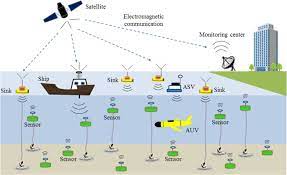Exploring the Depths: Unlocking the Potential of the Internet of Underwater Things (IoUT)

About Course
Dive into the fascinating world beneath the waves with this comprehensive course on the Internet of Underwater Things (IoUT)—a rapidly emerging domain that brings smart, connected technologies to the mysterious underwater realm. As humanity ventures deeper into oceans for exploration, conservation, energy, and communication, IoUT promises to revolutionize how we interact with aquatic environments. From remote ocean monitoring and underwater robotics to secure data transmission and sustainable marine energy, this course offers an exciting journey into how technology is redefining our relationship with the oceans.
Through in-depth chapters, you’ll explore underwater sensing systems, autonomous vehicles, communication methods like acoustic and optical channels, and even the future trends shaping this innovative field. Whether you’re a tech enthusiast, marine biologist, or aspiring engineer, this course combines technical knowledge with real-world applications to show how IoUT is helping us explore, understand, and protect the ocean like never before.
Course Content
Chapter 1: Introduction to the Internet of Underwater Things (IoUT)
Definition and concept of IoUT
00:00Importance and relevance of IoUT in underwater exploration and monitoring
00:00Overview of underwater communication and networking challenges
00:00Potential applications and benefits of IoUT in various industries
00:00